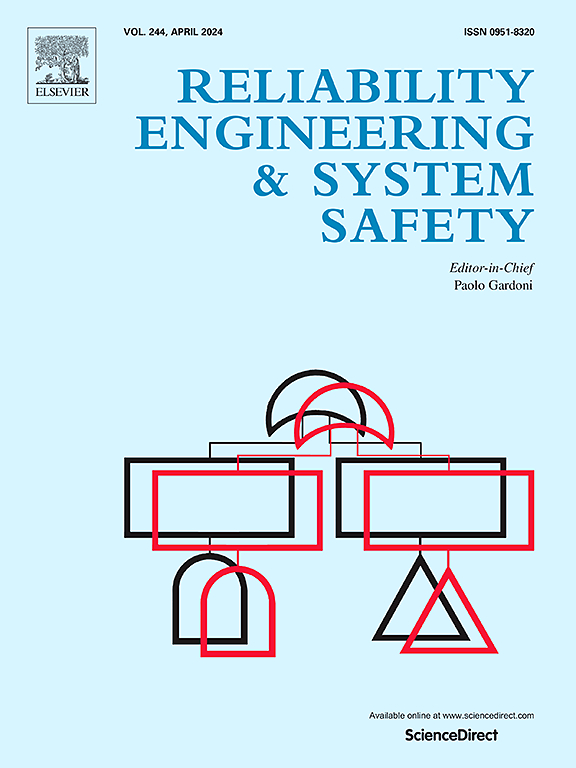Causation analysis of ship collisions using a TM-FRAM model
IF 9.4
1区 工程技术
Q1 ENGINEERING, INDUSTRIAL
引用次数: 0
Abstract
Ship collisions pose a significant threat to life and property, presenting a major challenge in maritime safety. Current risk analysis methods have been criticized in terms of a lack of capacity of quantifying the risks of different features and a standardized database reflecting the multidimensional risks of human, mechanical, environmental, and management factors. Additionally, traditional analysis sometimes involves strong assumptions that 1) the established and widely used databases can capture all the essential features of ship collisions and 2) the modelling of ship collision process can be simplified by focusing the analysis on a single causal relationship at once. This paper aims to develop a new approach to enabling multi-dimensional analysis of the causation of ship collisions through the establishment of a new database for ship collisions by innovatively combining Text Mining (TM), Association Rule (AR), and Functional Resonance Analysis Method (FRAM). The new approach enables to construct a risk analysis network based on FRAM, and the model's practicality and effectiveness are validated through expert reviews and case studies. As a result, thirty-eight key risk factors have been successfully identified as per their influence to ship collision incidents, encompassing human error, mechanical failures, adverse environmental conditions, and operational issues. The findings not only offer a new perspective and methodology for ship collision risk analysis, but also enrich the theoretical framework of ship safety management, providing valuable guidance for ensuring ship navigation safety.
求助全文
约1分钟内获得全文
求助全文
来源期刊

Reliability Engineering & System Safety
管理科学-工程:工业
CiteScore
15.20
自引率
39.50%
发文量
621
审稿时长
67 days
期刊介绍:
Elsevier publishes Reliability Engineering & System Safety in association with the European Safety and Reliability Association and the Safety Engineering and Risk Analysis Division. The international journal is devoted to developing and applying methods to enhance the safety and reliability of complex technological systems, like nuclear power plants, chemical plants, hazardous waste facilities, space systems, offshore and maritime systems, transportation systems, constructed infrastructure, and manufacturing plants. The journal normally publishes only articles that involve the analysis of substantive problems related to the reliability of complex systems or present techniques and/or theoretical results that have a discernable relationship to the solution of such problems. An important aim is to balance academic material and practical applications.
 求助内容:
求助内容: 应助结果提醒方式:
应助结果提醒方式:


